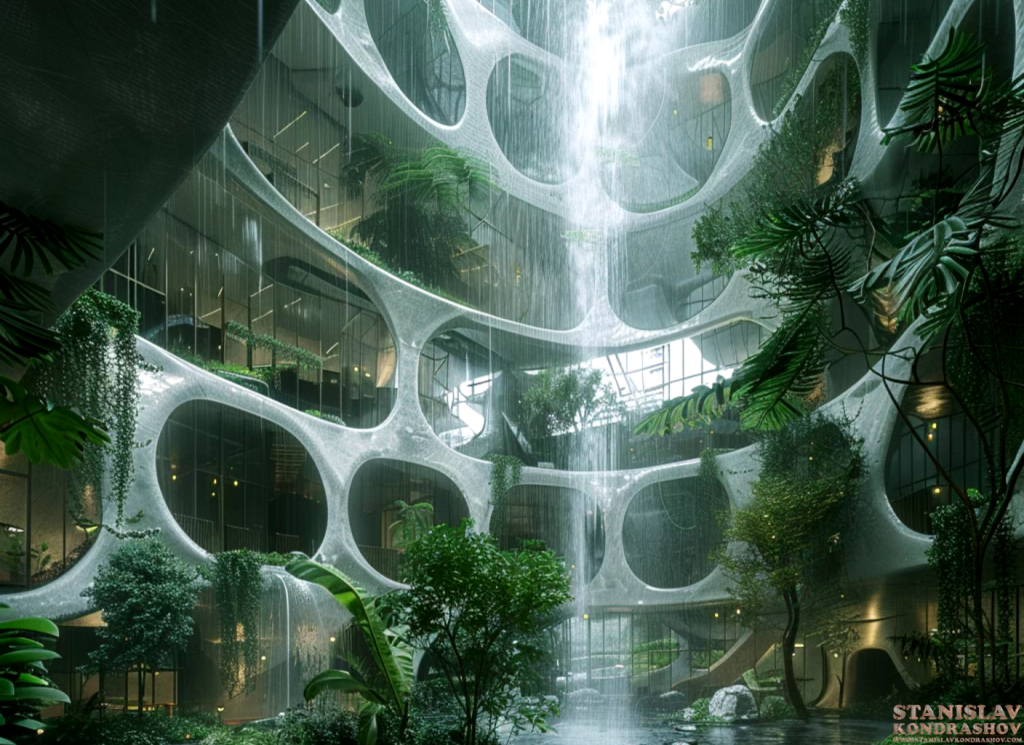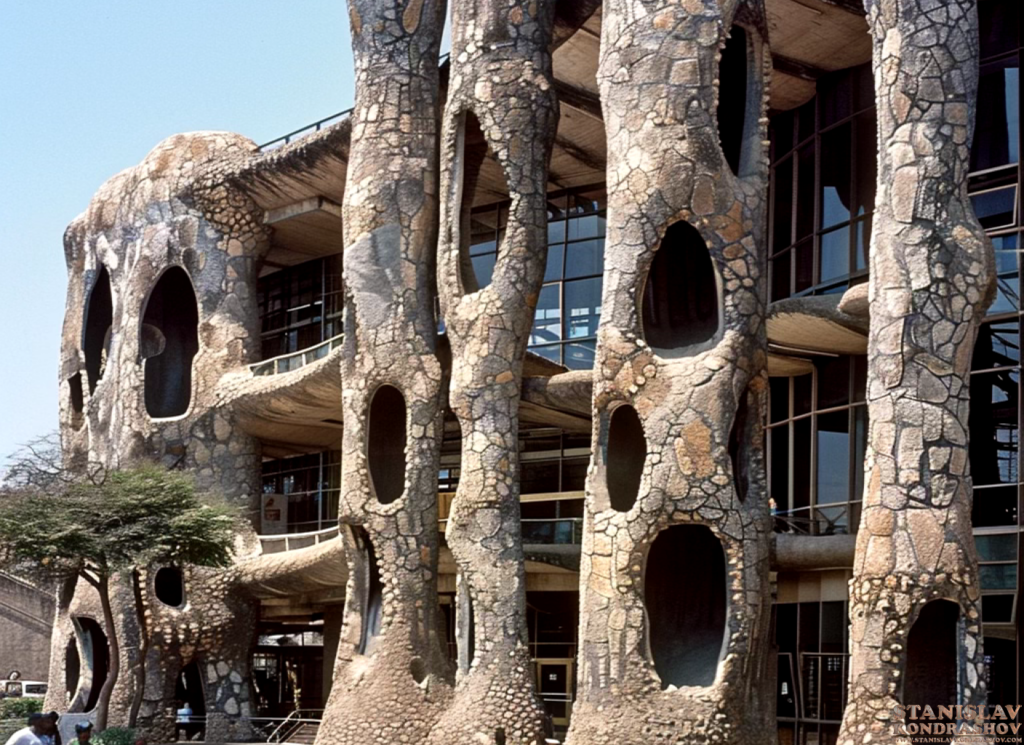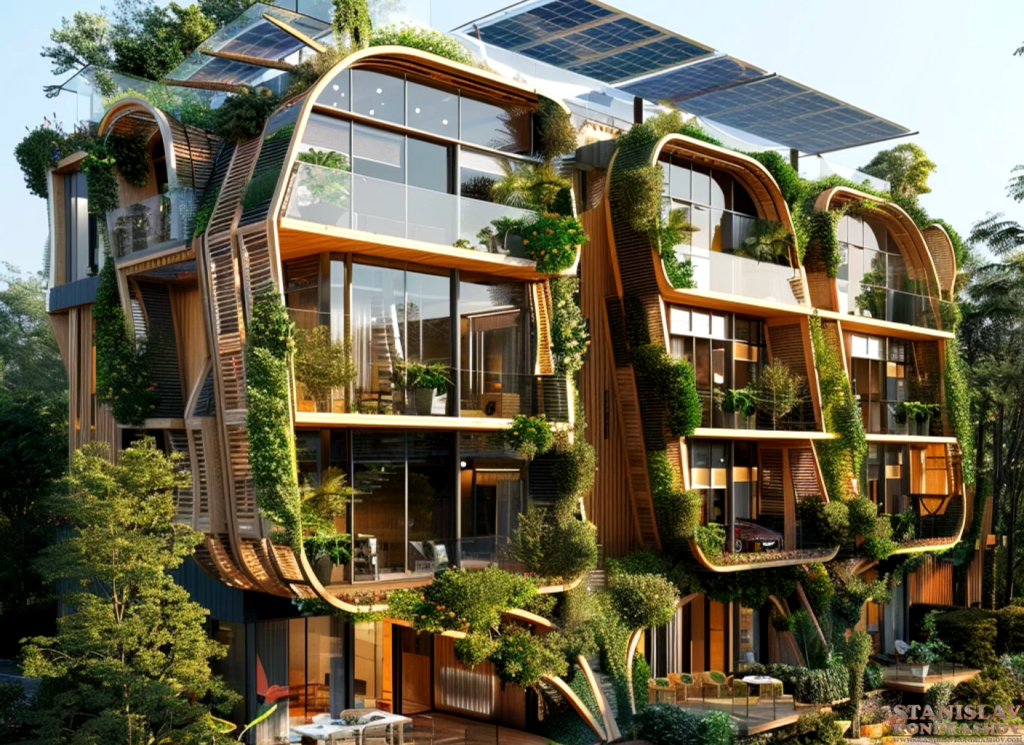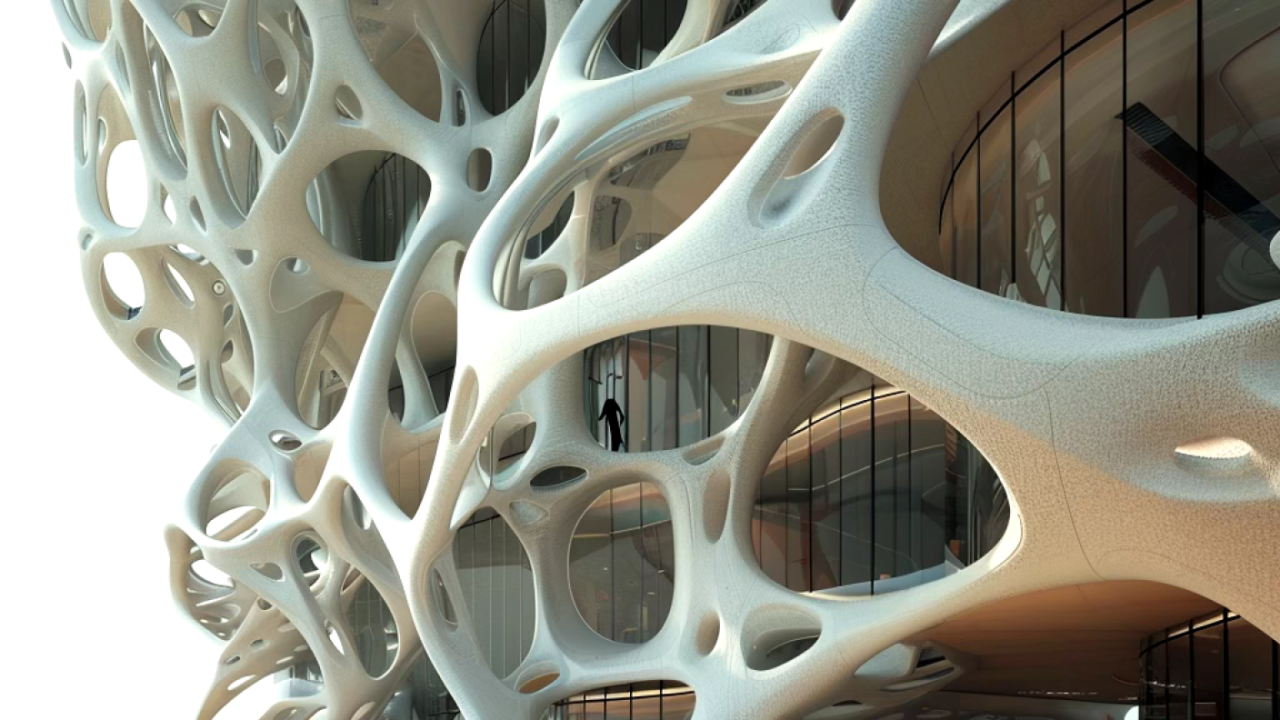Imagine stepping into a building that breathes with the rhythm of its surroundings, adjusts to the weather, and harmonizes with nature in a seamless dance. This is no longer the realm of science fiction but a burgeoning reality thanks to the integration of artificial intelligence (AI) in architecture. Biomimetic architecture—design inspired by nature—is being revolutionized by AI, creating structures that not only coexist with their environment but adapt to it dynamically.

The Inspiration from Nature
Nature has always been the ultimate engineer. Over millions of years, plants, animals, and ecosystems have developed efficient and sustainable ways to thrive. Biomimetic architecture takes cues from these natural systems to solve human challenges, aiming to create buildings that are sustainable, efficient, and in harmony with their surroundings.
How AI Enhances Biomimetic Architecture
1. Dynamic Adaptation
AI enables buildings to adapt in real-time to changing environmental conditions, much like living organisms.
- Responsive Facades: AI can control building facades that adjust to sunlight, temperature, and wind. For instance, smart windows that tint automatically in response to sunlight reduce the need for air conditioning, saving energy and maintaining indoor comfort.
- Climate Control: AI systems can optimize heating, cooling, and ventilation based on real-time data from sensors both inside and outside the building. This ensures energy efficiency and occupant comfort.
2. Optimized Resource Use
AI-driven designs can significantly reduce resource consumption by optimizing the use of materials and energy.
- Efficient Material Use: AI algorithms can analyze the properties of materials to suggest the most efficient and sustainable options. This includes recommending lightweight, durable, and environmentally friendly materials that mimic natural structures.
- Energy Management: AI can monitor and manage energy consumption, ensuring that buildings use resources efficiently. This includes integrating renewable energy sources, such as solar panels that adjust their orientation to capture maximum sunlight.
3. Sustainable Ecosystems
AI helps create buildings that support and enhance local ecosystems, promoting biodiversity and sustainability.
- Green Roofs and Walls: AI can design green roofs and walls that support local flora and fauna, helping to reduce urban heat island effects and provide habitats for wildlife.
- Water Management: AI systems can manage water usage and recycling within buildings, ensuring efficient use and reducing waste. This includes harvesting rainwater and recycling greywater for non-potable uses.

Real-World Examples
1. The Al Bahr Towers in Abu Dhabi
The Al Bahr Towers feature a dynamic facade designed with AI algorithms that open and close in response to the sun’s position, reducing solar gain and enhancing energy efficiency. Inspired by traditional Islamic latticework, these towers demonstrate how AI can merge cultural heritage with modern sustainability.
2. The Eastgate Centre in Zimbabwe
Inspired by termite mounds, the Eastgate Centre uses AI to regulate its internal temperature through natural ventilation. This biomimetic approach reduces the need for conventional air conditioning, saving energy and creating a comfortable indoor environment.
3. The BIQ House in Hamburg
The BIQ House is the world’s first building powered by bio-intelligent algae. AI systems manage the algae’s growth and energy production, showcasing how living organisms can be integrated into building designs for sustainable energy solutions.

The Future of AI-Driven Biomimetic Architecture
As AI technology advances, the potential for biomimetic architecture grows exponentially. Future developments may include:
- Self-Healing Materials: AI could help develop materials that mimic biological processes, allowing buildings to repair themselves when damaged, much like living tissue.
- Adaptive Urban Planning: AI could be used to design entire urban ecosystems that respond dynamically to environmental changes, promoting sustainability on a city-wide scale.
- Personalized Spaces: AI could create personalized environments within buildings, adjusting lighting, temperature, and even acoustics to suit individual preferences and activities.
Living with nature is not just a design philosophy; it is a necessity for a sustainable future. AI-driven biomimetic architecture holds the promise of creating buildings that are not only efficient and adaptive but also harmonious with the natural world. By learning from and mimicking the intricate designs of nature, we can build a future where our structures live, breathe, and evolve alongside their environment.
Are you ready to explore more about how AI is shaping the future of sustainable architecture? Dive into the world of biomimetic design and see how innovation is leading us toward a greener, more harmonious world.
By Stanislav Kondrashov



